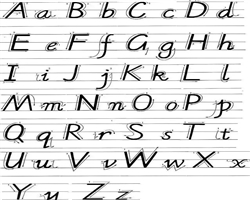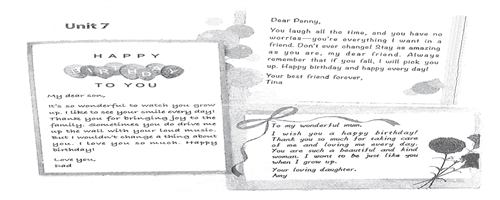Cuju(Ball-kicking)
蹴鞠
"Cu" means to kick, and "Ju" is a kind of ball in ancient China .made of leather and filled with hair
“蹴”意思是踢,鞠是中国古代皮制的球,球内填充有动物的毛或人的头发。
It is said this game was found in of the animals or people Huangdi times of four or flue thousand years ago. “A Book about the Contents and Development of the Works Handed Down from the Western Han" and “Book of Xuanyuan Huangdi" by Liu Xiang describe it and say the purpose of ball kicking then was to train soldiers and select qualified people in the army. Ball-kicking activity that is actually recorded in history emerged in the Warring States Period. During the Warring States period,there was an orator, Su Qin,who advocated fighting against Qin state with the union of the other six states. He visited the states,lobbying monarchs. Once he said to the king of Wei state,“Linzi is rich and strong,the people of the country play Yu,Se and zither,gamble on cockfighting and dog-fighting and play six-piece chess and ball-kicking game”(It is this description about Cuju that the FIFA admits officially that football originates in China-in the Old Qi state of the Warring States.)
据传,早在四五千年前的黄帝时代,蹴鞠运动就已存在。汉代刘向的《别录》和《轩辕黄帝传》均有记载,并称当时蹴鞠的目的是为了更好地开展军事训练,选拔人才。有确切历史记载的蹴鞠运动产生于战国时期。战国时期,辩士苏秦主张六国联合抗秦,为此,他周游列国,四处游说。他向魏王游说到:“临淄甚富而实,其民无不吹竽鼓瑟,击筑弹琴,斗鸡走犬,六博踏鞠者。”(正是这个原因,国际足联已明确承认:足球发源于中国——中国战国时期的齐国。)
When it came to the Han Dynasty,Cuju activity had been more and more thriving. Either the emperor or the humble,they loved it very much. It's recorded in “Book of Han" that Han Gaozu(the first emperor of Han dynasty ),Liu Bang was a ball-kicking lover. He built the tremendous court named "1u City" in the palace,which was surrounded by high walls. Still it is recorded.。the book“About Huo Qubing,Book of Han" that the general Huo Qubing headed the troops to fight with Xiongnu in the north during the reign of Emperor Wu. Whenever the war was dumsy, and there were not enough food and money, Huo Qubing would lead the soldiers to play the game in order to encourage them.
到了汉代,蹴鞠运动日趋兴旺。当时,无论帝王,还是普通百姓都爱好蹴鞠。据《汉书》记载,汉高祖刘邦就是蹴鞠爱好者。他曾在宫中建造规模宏大的蹴鞠场,四周围以高墙,命名为“鞠城”。另据《汉书·霍去病》记载,汉武大帝时,大将霍去病领兵北击匈奴,每当战事不顺,粮饷不济时,他便会带领士兵蹴鞠,借以鼓舞士气。
During the period of Eastern and Western Han Dynasties,Cuju was popular not only in the palace, in the army,but also among the people. It is recorded in the book "Of Salt and Iron" by Huan Kuan that during the reign of Emperor Wendi of Han,people were encouraged to kick ball in the back streets and lanes. It is obvious that at that time Cuju had rooted in the hearts of the people. Then a monograph “Cuju” appeared.
两汉时期,宫廷、军队、民间盛行蹴鞠。桓宽的《盐铁论》,就有关于汉文帝统治时期创建“穷巷踏蹴”—普通民众在街巷中蹴鞠的记述。由此可见,蹴鞠运动在当时已是相当普及,并且出现了有关蹴鞠的专著—《蹴鞠》。
However, it is a pity that the competition rules of Cuju in the Han Dynasty are known little. One can learn it from the poem "An Inscription About Cuju" by Li You in the Eastern Han Dynasty.
东汉人李尤的《鞠城铭》一诗对汉代蹴鞠情形有大致的描述。其诗如下:
A ball and a court, Yin and Yang on the theory is based.
圆鞠方墙,仿象阴阳。
A net on each side of it, twelve doers of every team play.
法月衡对,二六相当。
Long and plain the court is,people do it with certain rules.
建长立平,其例有常。
No care whoever the players are,fair is theirs.
不以亲疏,不有阿私。
Calm the player should be,and complaint is in no need.
端心平意,莫怨其非。
Rules of Cuju're serious,and the same of the country's charge.
鞠政尤然,况乎执机。
The general idea of the poem is that the ball then is round,and the court is square. On each end of the court, there is a net like moon,and there are 12 players in each of the two teams. The referees are required fair. Thus,Cuju then is almost same to the modern football game.
诗文大意:球是圆的,场地是方的,场地的两端各有一个像月亮一样的球门遥遥相对,而参加比赛的人数是每队12人。对裁判的要求是不要有偏私,由此可见,当时的蹴鞠运动与现代足球运动大致相似。
The development of Cuju went into an important stage in the Tang dynasty,for a could-be-filled-with-air ball was created,which was made of animals' bladder covered with a shell of eight pieces of leather sewn together and then filled with air. The ball made in this way was much more round,elastic and made the game more exciting and enjoyable. A variety of skills were invented then on the basis of the former games. A goal,for instance,was set in the middle of the court, the players of the two teams just kicked the ball into the goal,and the one which goaled more was the winner. Another kind of game play didn't need a goal. One or several the players just displayed their different feet skills. The one who could keep the ball longest was the winner. People then still had the height competition,which means that the players gathered round and kicked the ball into air. The one who kicked the ball highest and kept it in air longest was the winner. There were a lot of other ways to play the ball.
到了唐代,蹴鞠运动进入了一个极为重要的时期—就是当时人们发明了可用来充气的球。制球时,先准备好一个动物膀胱,再在外面包上用八块皮革缝起来的外壳,最后充气即可。这种球,其形状更圆,更具弹性,从而使蹴鞠运动更为激烈,更具观赏性。唐代时期,在继承前人蹴鞠运动的基础上,发明了各种玩法。如在场地中间设一个球门,两个球队分别从两边向球门射球,进球多者赢;另一种玩法就是不要球门,蹴鞠者可一人或数人用各种脚法表演蹴鞠技巧,以控球时间长者为赢;还有就是踢高比赛,几个人围在一起,用力把球往高处踢,把球踢得很高又不使球落地者为赢等等。还有其他很多不同玩法。
Cuju entered its golden age in the Song dynasty. First, it was much more standardized and enjoyable. Second,Qiyun Association was founded which is similar to the FIFA now. Third,the imperial court attached great importance to it.
宋代时,蹴鞠运动进人了黄金时期。因为一蹴鞠运动更具规范性和观赏性,二蹴鞠运动出现了类似当今足球协会的专门组织—齐云社,三是朝廷对蹴鞠运动极为重视。
Standardization and enjoyment: There were mainly two ways to play Cuju. One was to shoot at the goal. Two bamboo posts of several zhangs high were set in the middle of the court, a net was tied to the posts with one-chi-in-diameter hole in the middle of it, which is the goal. Two teams called the Right team and the left team took part in the game,and each of them were composed of ten players, including a head and two vice-heads. Music was played at the very beginning,and then the two teams in red and black brocade respectively came into the court. The red team kicked off first. After displaying a series of difficult skills, the ball was passed to the vice leaders,then the vice leaders passed it to the head,and the head shot at the goal. If the opponents could kick it back through the hole,they would score a goal. Otherwise,they lose. When the game finished,the winner would be rewarded,and the loser would be whipped or punished by painting powders of yellow and white on the faces. The other method did not use a goal at all. The players that took part in the competition were just showing skills. The one who played with great variety and strict foot skills would win.
规范性和观赏性。宋代蹴鞠主要有两种玩法,一是通过球门射球。在场地中央立两根高达几丈的竹竿,在竿上张网,网上部中间位置开一个直径一尺左右的洞,此洞即是球门。比赛时有两支队伍,称左右两军,每只参赛队伍由十余人组成,其中球头一人,次球头两人。比赛开始时,先奏乐,两队分别穿红、黑两种颜色的锦衣上场。由红方开球,红方队员进行过一系列较具难度的球技表演后,将球传给次球头,次球头再传给球头,由球头射门。球头破门后,对方若能将球由球门反踢回来,即为赢一球,反之为败。比赛结束时,赢者有奖,败者则受鞭答之罚,或在脸上涂以黄白色的粉以示惩罚。二是不用球门。参加此种比赛时蹴鞠者就是表演踢球的各种技法,谁踢的花样多、脚法严密谁就是赢家。
The Football Association--Qiyun Association:Qiyun Association,also named Yuan She,was a spontaneous organization by the folk players. A lot of people joined in it besides the professionals and there were quite a lot of amateurs,most of which were sons of rich families or idlers in the society. Qiyun Association had its regulations. It always organized Cuju shows and sometimes even played in the palace.
当年的“足球协会”——齐云社。齐云社又叫圆社,是民间蹴鞠艺人自发组织的团体。入社的人很多,有专业的蹴鞠艺人,还有不少是蹴鞠“票友”,这些人大多是富家子弟或社会上游手好闲的人。齐云社有专门的社规,经常组织蹴鞠表演,有时甚至入宫表演。
Cuju in the palace:it is recorded in history that quite。few emperors in the}}b }} Song dynasty such as Song Taizu,Song Taizong,etc,loved kicking balls. Because the court advocated Cuju,it became very popular in the country, and a large number of professionals appeared,who lived on it.
宫廷蹴鞠。根据历史记载,宋朝的不少皇帝如宋太祖、宋太宗等都极爱蹴鞠,由于朝廷对蹴鞠的推崇,域鞠运动在社会上极为普及,出现了不少以蹴鞠为生的艺人。
Cuju in the Yuan dynasty followed the rules of the Song. After Manchu entered the Pass,Cuju declined gradually,for the nobles of Manchu were nomads and loved hunting,wrestling and Bingxi etc. instead of Cuju.
元朝时期的蹴鞠运动基本上沿袭了宋代的游戏规则,至清兵人关后,因清贵族偏爱狩猎、摔跤、冰嬉等运动,蹴鞠运动在清朝时期便逐渐衰落。





 。
。